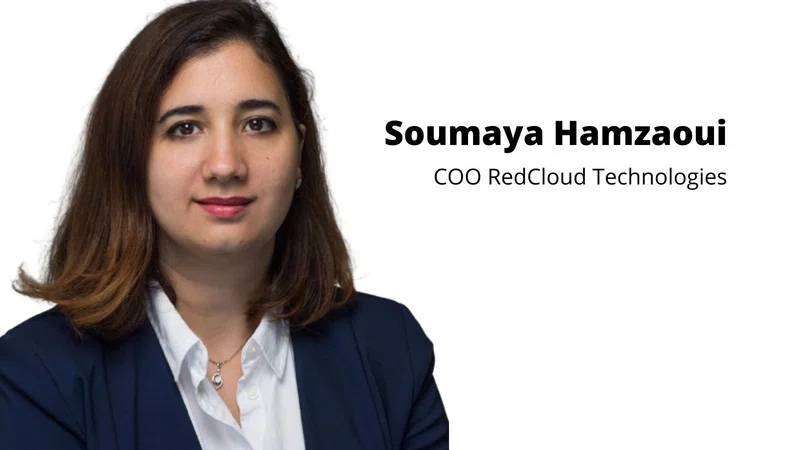The Open Banking wave that originated in Europe is now spreading to the whole world. Open Banking makes it possible for third parties to develop applications using banking data. This obviously presents a threat to revenue sources that banks have controlled for a long time. Is Open Banking all bad news for the Banks?
This article looks into the impact of Open Banking on the banking revenue structure and what role the prevailing low-interest environment could play in that.
Before we do that, let us take some time to understand the revenue structure of traditional banks.
Revenue Sources of Traditional Banks
Bank revenue sources can be broadly classified into Interest Earnings and Non-Interest Earnings. For example, for Wells Fargo, 56% of 2019 revenue came from interest earnings and the rest from non-interest earnings.
Interest Earnings
When we think of banking, we think about an organization that takes deposits and lends those deposits at higher rates to earn a profit. Well, that is mostly how the interest earnings are generated. Although this is not as simple as taking deposits and lending them out. Not only there are various types of assets and liabilities that banks deal with, there are various parties banks borrow from and lend to. A better way to think about interest earnings is that banks create assets by lending and use many sources to fund lending activities.
Apart from retail and business customers, banks lend to or borrow from other banks and the central bank of the country. For the sake of this article, we will refrain from talking about banks dealing in the interbank market and with the central bank.
There are primarily two factors that influence interest earnings - interest rates and terms. Rates are pretty straightforward - the weighted average rates on the assets have to be more than the weighted average rates that banks need to pay on the funds raised to make any profit from the raised funds. So, banks can maximize their interest income by raising funds at rates as low as possible and lending them at a rate as high as possible. As idle deposits do not earn any interest, it lowers a bank’s interest income.
Now, why terms are important?
Depositors and investors want a higher return as the term gets longer in normal market conditions. Why? A liquidity premium is added to the rates as an opportunity cost for the illiquidity of the investment.
So, banks need to offer higher interest rates to get longer-term funds which they can in turn use to create high-return, longer-term assets such as mortgages and car loans. This is why term deposits offer higher interest rates than savings accounts.
Another reason why banks need to be careful about the terms is to manage the asset and liability cash-flows. If the banks create assets of very longer-term and fund them with shorter-term cheap sources, banks may face severe liquidity issues. Creating assets of very shorter-term may lower a bank’s interest-income potential and may leave the bank with too much cash lowering the overall interest yield.
A bank’s ability to generate interest earnings in the long-term depends on various factors including access to cheap funding sources and the market they are operating in. Prolonged low-interest rates are detrimental to a bank’s ability to earn interest income.
Note: Banks also hold debt assets issued by other organizations and earn interest on them.
Non-Interest Earnings
Interest income for banks can be very unpredictable for various reasons. This is why banks have explored various other revenue sources grouped as non-interest earning sources.
So, what are the sources for non-interest earnings? The low-hanging fruits for banks are charging fees on the deposit holders. Some common charges are non-maintenance of minimum balance, internet banking charges, and overdraft charges, etc.
Other charges include chequebook charges, card issuance charges, and card maintenance charges, etc. Banks also often charge for each transaction - ATM withdrawal charges, cash withdrawal charges, and online transaction charges, etc. Banks also charge various fees on loan processing and settlement.
But, banks do not only earn from their customers. Card networks such as VISA and Mastercard charge merchants a fee on every transaction. The fee is charged in the form of a discount rate which is called Merchant Discount Rate (MDR). MDR comprises of Interchange Fee and Network Fee. The bank that issued the card (on behalf of the card network) gets the Interchange fee on every transaction.
Banks also cross-sell various other financial services such as wealth management, insurance, mutual funds sales, provident funds, payments, credit rating, etc. as potential revenue sources. These offerings may be provided by the banks themselves or by third parties in which case banks earn a commission. Banks sometimes also promote third-party non-financial services such as flight booking/train booking, bill payments, etc. for commission revenue.
Apart from that, banks may own real estate which may earn banks lease/rent income. Banks often own some financial assets which may contribute some capital gains and other incomes.
Ok, we have covered a lot of detail on banking revenue sources. Now, let us introduce Open Banking.
What is Open Banking?
Open Banking is a set of regulatory frameworks that define banks as custodians of customer data, not owners. As per Open Banking rules, customers own their data, and Banks are obligated to provide access to consumer data to non-affiliated third parties allowed by customers. The data generally shared through Application Programming Interfaces or APIs.
Open Banking makes it possible for non-affiliated third parties to use the data with banks to create applications for customers and provide services that the banks themselves are not well suited to provide.
From a bank’s point of view, Open Banking may seem like bad news as it eliminates the competitive moat created by user data. But, the reality is that traditional banks rarely use customer data to their full potential. Think about Google if it were only collecting a lot of data but never used or shared that data with anyone. That is how the traditional banks are - they have enormous amounts of data but rarely use that data for any tangible purpose.
Is it really all bad news for banks?
Before we answer that, let us explore an emerging banking structure - ‘Banking as a Service’.
Banking as a Service (BaaS)
In BaaS Banks allow third parties access to Bank’s database and infrastructure to build applications on top of the Bank’s infrastructure. So, how does it look like?
To understand BaaS, let us take the example of Solarisbank.
Solarisbank has a full German banking license and has built the technology infrastructure for various banking services. But, Solarisbank does not run banking operations. Instead, it allows third parties to create banking applications on top of their infrastructure using APIs and run the operations. They offer white-label product infra for Digital Banking/cards, lending, payments, and KYC. All the third parties need to do is create a frontend with their own branding.
In another example, UK-based Starling Bank entered a BaaS partnership with Raisin UK. Raisin is a deposit marketplace that allows users to choose the best saving deals. Starling APIs allow Raisin to open accounts for users, collect deposits, and place the deposits with Raisin’s partner banks.
Apart from database and infrastructure, banks can also extend the benefits of their regulatory licenses to fintech platforms. For example, many Neobanks are not registered as banks and thus cannot offer insured deposit service to customers. They often build their applications on top of the BaaS infrastructure of licensed banks. Some other applications which are being built on the top of a BaaS infra are identity verifications/ KYC, payments, instant lending applications, P2P lending, and wealth management, etc.
The use of BaaS may go beyond financial services and help banks provide just-in-time financial services with the lowest friction for the customers. For example, an online car dealer can offer instant loan to customers from their own platform.
So, how can existing banks benefit from BaaS? Let us understand the impact of BaaS on the revenue and growth of traditional banks.
Impact on Banking Revenue Sources
So, how can banks earn revenue through BaaS? One way is to earn revenue from API requests - API request fee or subscription-based models. Banks can also opt for revenue-sharing models. For example, if the bank issues card through the BaaS partner, the bank and the partner may share the interchange fees. The same can be applied in the case of deposits collected and loans extended through BaaS partners.
Now, let us talk about the impact of BaaS on the growth potential of the banks and future revenue sources. Bank revenue sources are under threat from various fintech players. Fintechs are targeting various customer journeys to eat up market share from the banks. As legacy systems in banks are often built to deal with regulations rather than for the convenience of the customers, banks often lack the capability to retaliate with comparable customer experience. The challenge is far more with the younger customers who grew up with social media and mobile devices. On the other hand, banks have strategic assets such as regulatory licenses and customer data which are difficult for fintech startups to obtain. BaaS provides a collaborative approach for banks and fintech firms to work together.
At the same time, BaaS opens up low-cost acquisition channels and gives access to customer bases that are too expensive for banks to acquire and manage. So, traditional banks can use BaaS to increase their revenue potential from their existing assets and at the same time increase future revenue potential by acquiring diverse customer bases.
Going Forward
Let us bring back interest and non-interest revenue sources once again. As mentioned above, a low-interest environment makes it difficult for banks to earn a higher interest margin. COVID has caused the monetary policy rates to go to record low levels around the world and given the post-COVID economic fatigue the interest rates are expected to be low for a considerable time. The low-interest-rate environment is a strong enough reason for banks to boost their revenue potential with BaaS. To maintain growth banks need to increase deposits/credit outlay and increase non-interest income sources.
On the flip side, BaaS has the potential to commoditize banking service and dilute banking brands. Banks need to be careful about this while choosing BaaS partners. Banks can avoid BaaS partners in their core sectors/customer base but use BaaS to gain access to non-core sectors and customer bases.













